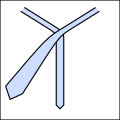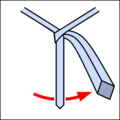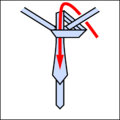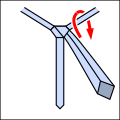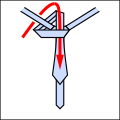You can help expand this article with text translated from the corresponding article in Russian. (October 2024)Click [show] for important translation instructions.
|
| Half-Windsor knot | |
|---|---|
 |
The half-Windsor knot, also known as the single Windsor knot, [1] is a way of tying a necktie which produces a neat, triangular knot. It is larger than the four-in-hand knot and Pratt knot, but smaller than the Windsor knot. The half-Windsor is derived from the Windsor in that it is only brought up around the loop on one side rather than both. It works well with light- and medium-weight fabrics.
